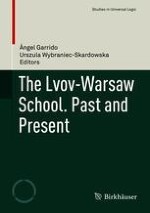2018 | OriginalPaper | Buchkapitel
Alfred Tarski: Auxiliary Notes on His Legacy
verfasst von : Jan Zygmunt
Erschienen in: The Lvov-Warsaw School. Past and Present
Aktivieren Sie unsere intelligente Suche, um passende Fachinhalte oder Patente zu finden.
Wählen Sie Textabschnitte aus um mit Künstlicher Intelligenz passenden Patente zu finden. powered by
Markieren Sie Textabschnitte, um KI-gestützt weitere passende Inhalte zu finden. powered by
